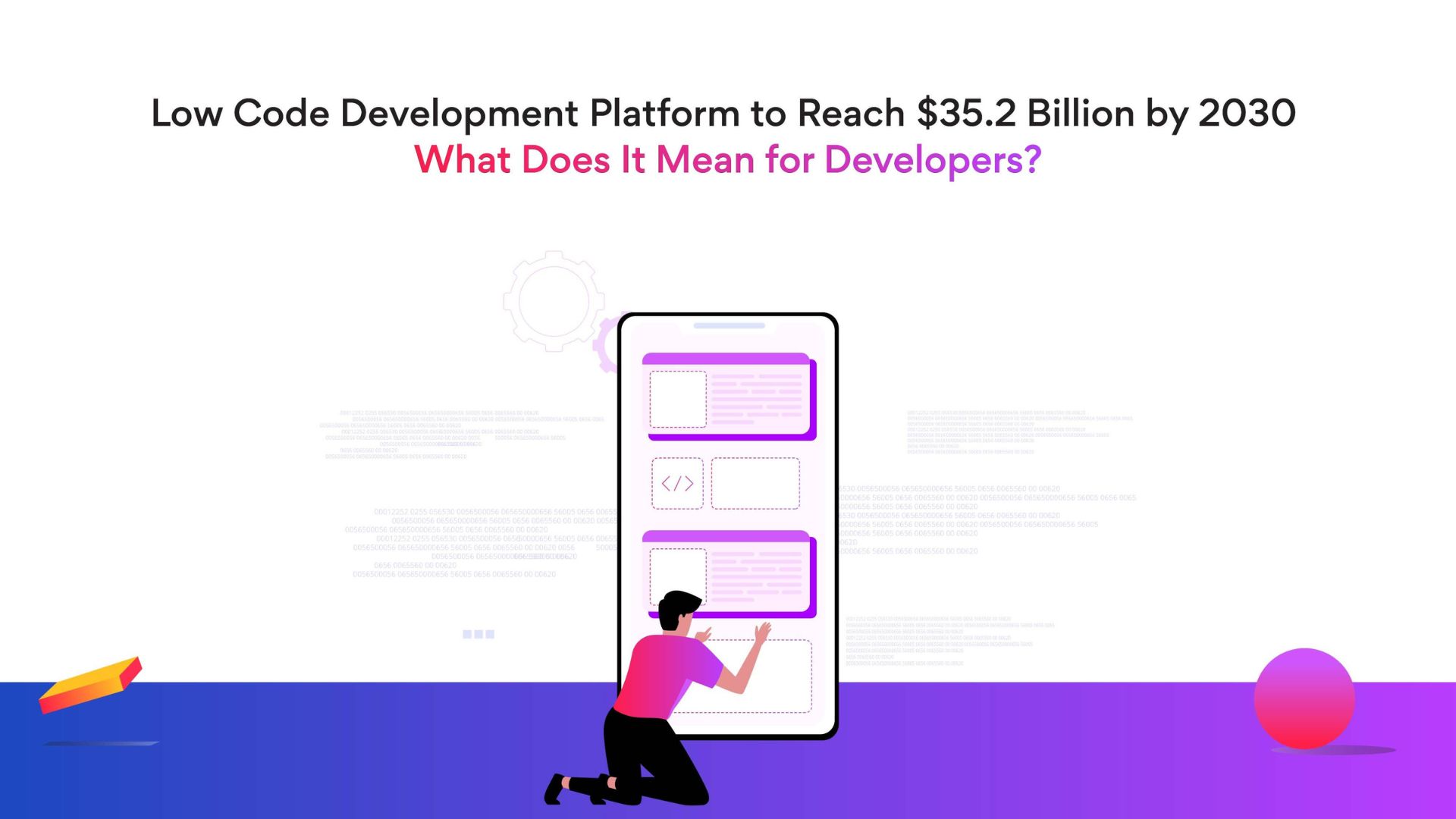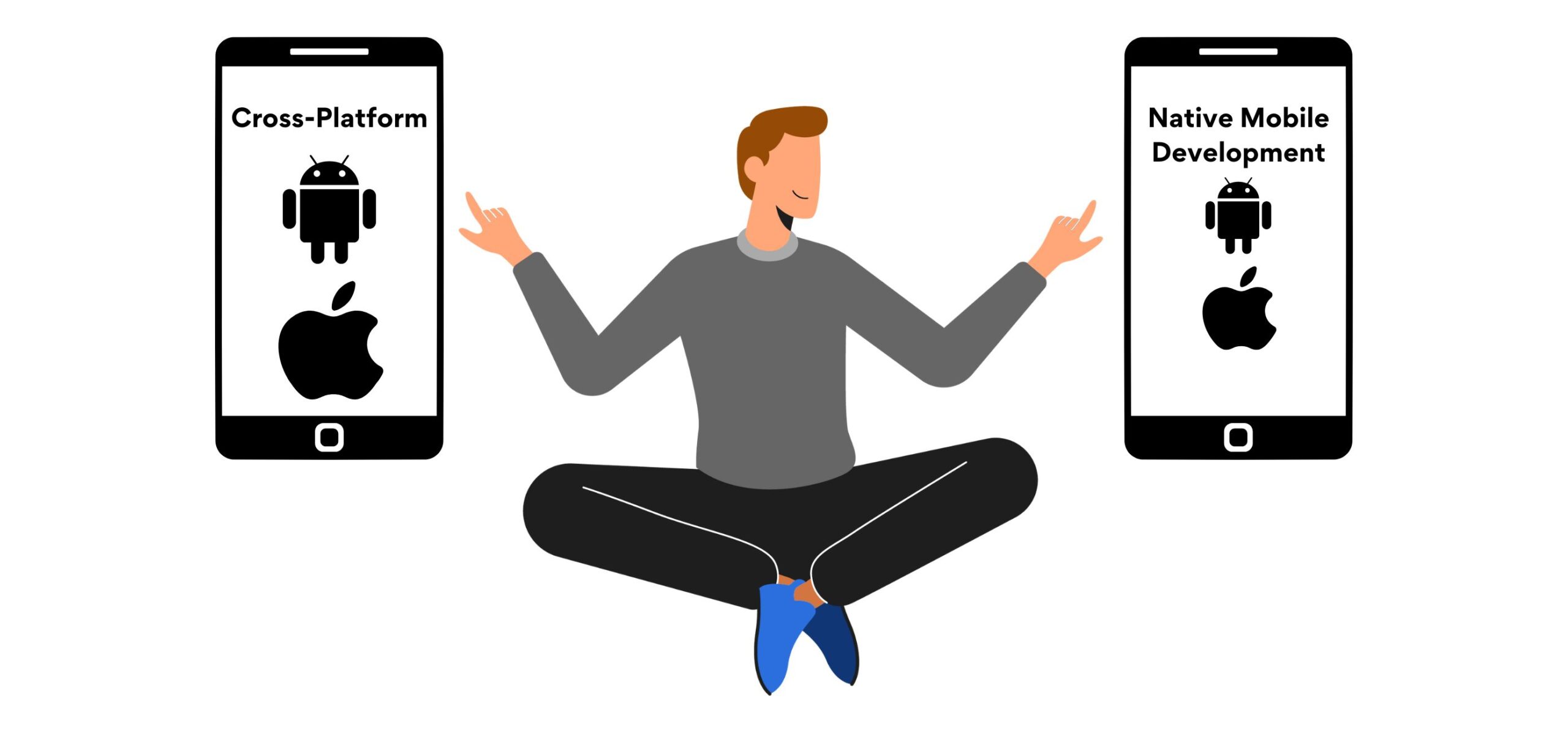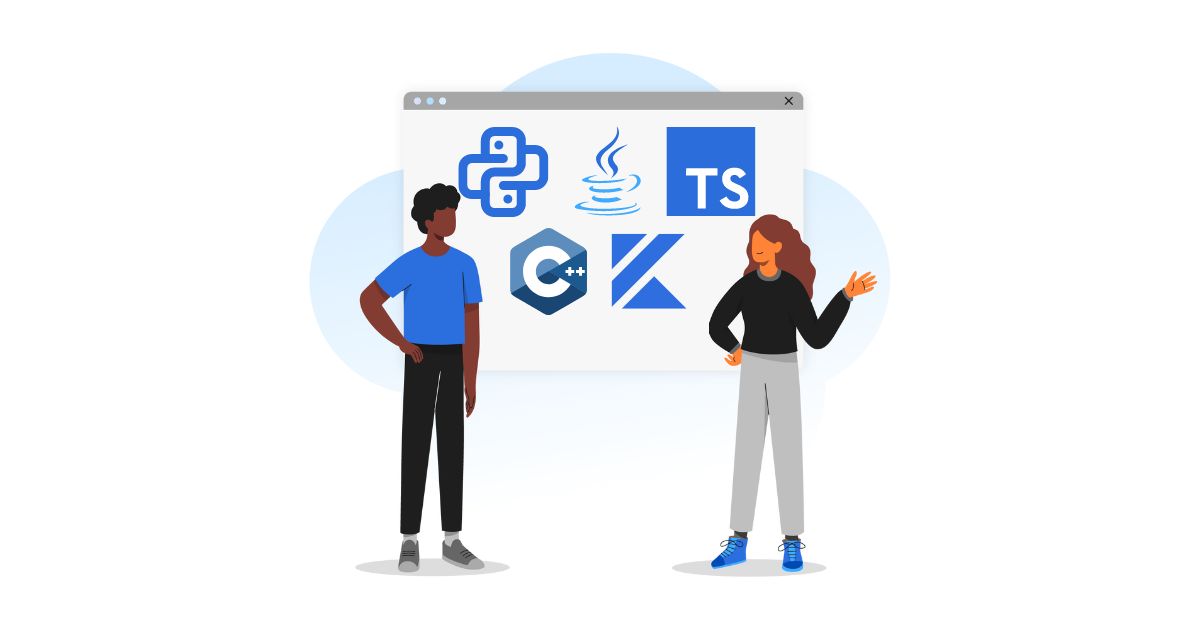Low Code Development Platform to Reach $35.2 Billion by 2030: What Does It Mean for Developers?
What is meant by low-code development? Will low code replace developers? How big is the low code development platform market?
Let’s find out.
What is meant by low code development?
Low code development, as the name suggests, is software development that requires little to no coding to build applications, websites, and software.
In 2021, the global low code development market was worth $5.5 billion. However, this market is expected to grow at a CAGR of 22.9 percent from 2022 to 2030, according to a report by Grand View Research.
Here are the key reasons behind the growth of the low code development platform.
- Organizations around the world are interested in increasing the automation of their business processes and heading towards digital transformation.
- Covid-19 has accelerated the growth as the companies are now rushing towards digital transformation.
- The low-code development has improved over the short span of time making its way to big organizations as the companies have begun trusting the platform.
Let’s take a look at the key insights of the report. The insights in the report are based on the data from 2021, and the forecast is for the period 2022 to 2030.
Also, read Ten Best Low Code Platforms to Use in 2022
What type of application development is using low-code development?

Mobile applications have the largest share in the low-code development platform market
Mobile application development had the largest share in the low-code development platform market in 2021. With thirty-four percent revenue share in the market, the mobile-based application segment dominated the market.
A mobile-based client application, a mobile middleware server, and APIs are the major mobile low code development platforms in use.
The web-based application segment is expected to grow at a CAGR of 22.1% between 2022 and 2030. Low code development platforms offer powerful IDEs and user interfaces, which helps in simplifying the development process of web-based enterprise applications. This step further improves control over integrations, testing, and deployment which enhances the productivity of the software and web development team.
Where are the low-code development platforms being deployed?
A majority of low-code development platforms are being deployed to the existing cloud platforms, offering better reach and enhancing the strategy of various companies that use them. According to a recent report, the cloud deployment segment is expected to grow at a CAGR of 24% between 2022 and 2030.
Which companies are adopting low-code development platforms? What is the end-use of applications adopting the platform?
Large-scale enterprises are adopting low-code platforms at a swift pace to enhance the productivity of their pro coders and attain agility in the software development cycle. In 2021, the large-scale enterprises had a 70 percent share in the revenue of the low-code development platform market.
SMEs are also increasingly adopting low-code development to build applications at a faster pace and improve their time to value. These benefits have accounted for an estimated growth rate of twenty-four percent for SMEs in the market share in the low-code development platform market from 2022 to 2030.
As for the end-use of the applications using a low-code development platform, the Banking, Financial Services, and Insurance (BFSI) segment holds over 26 percent share of the market revenue. BFSI segment is followed by the retail, IT and telecom, automotive and manufacturing, transportation and logistics, and education segment.
Which region is adopting a low-code development platform?
North America with a thirty-one percent revenue share leads in low-code platform adoption.
The Asia Pacific region is also experiencing high usage and is expected to grow at a CAGR of 26 percent between 2022 and 2030.
What does the growth of the low code development platform market mean for software developers?
Will low-code replace developers? Absolutely not!
Companies all over the world are adopting low code development to enhance the productivity of their development teams and not to replace them. Low code platforms still require software developers to write the application and draft the process of development and deployment.
Low-code development improves agility and the time-to-value ratio of the process, thus enhancing the overall software development experience.
Summary
Low code development platforms are accelerating the digital transformation of organizations across the globe. With the increasing popularity of these platforms, the market will expand and generate more low-code developers’ demand.
Are you a low-code platform software developer looking for a job in a US company? Join Turing and get hired by top Silicon Valley companies. You don’t have to travel to the US for the job, as Turing offers 100 percent remote software development US jobs. Head to the Apply for Jobs page and get hired!
FAQs
- Will low-code replace developers?
No, low-code development will not replace developers. Low-code platforms require software developers to write and develop the ‘pre-defined templates’ in these platforms. Low-code development enhances the software development process and improves the time-to-value ratio. - What is meant by low-code development?
Low-code development platform is a platform for software development that does not require low to no coding to develop applications and processes.
Join a network of the world's best developers and get long-term remote software jobs with better compensation and career growth.












